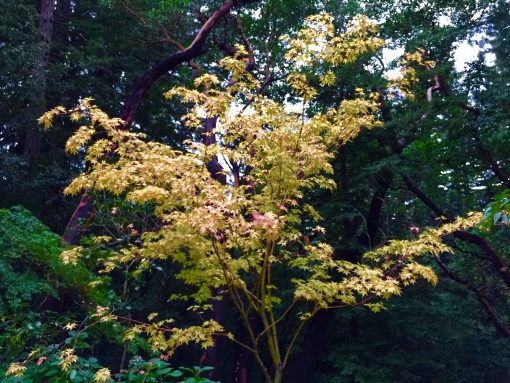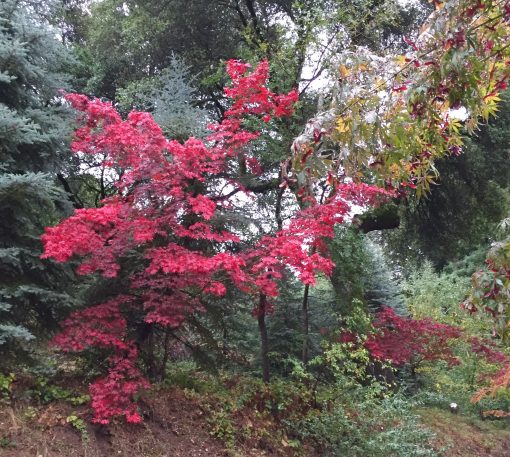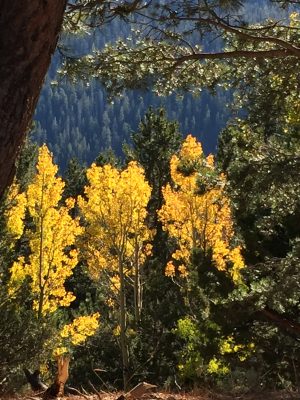
I have two Japanese maples on my deck. They are not nearly as large as those I had up in Bonny Doon but you have to start somewhere. One is a common acer palmatum seedling and the other a ‘Sanguo Kaku’. They have not started to show any fall color yet. It’s been a hot summer as you know.
Many of you readers were evacuated last summer and your garden did not get watered. This summer has been hot and everyone is trying to conserve water. So if your Japanese maple has suffered from hot weather, smoke and just plain tough conditions you may not get a spectacular fall foliage display this year. I see trees of all kinds going into an early dormancy showing a touch of fall color only. Every year is different.

Other things besides hot weather and not enough summer water to consider regarding fall coloring is that it can be disrupted by wind and rain coming at the wrong time. Japanese maples have a more delicate leaf than some of other trees and are more susceptible to the elements of nature. We most likely won’t get rain spoiling the display but wind during this time will put a quick end to the autumnal display.
At a local wholesale nursery recently I walked through their 36 inch box Japanese maple specimens getting ideas for future projects. Several that caught my eye included the variegated ‘Butterfly’ and ‘Oshio Beni’ with its orange and crimson fall coloring. Other notable maples that display vibrant fall coloring included ’Seiryu’, an upright laceleaf variety which turns bright gold, yellow and crimson in the fall. Also beautiful, the ‘Autumn Moon’ maples promised varying shade of gold to red.
Leaves change color when they are going into winter dormancy. When nights get long enough, leaves develop a corky layer of cells between the leaf stalk and the woody part of the tree. This slows the transport of water and carbohydrates. The manufacture of chlorophyll is slowed and the green color of the leaves begins to fade, allowing the other pigments to show through. Since the transport of water is slowed down, food manufactured by the remaining chlorophyll builds up in the sap of the leaf and other pigments are formed which cause the leaves to turn red or purple in color depending on the acidity of the sap.
For example, sumacs and California wild grape almost always turn red because red pigments are present and their leaf sap is acidic, While many of the oak and sometimes ashes will get a purplish color because the sap is less acidic. Trees like birch don’t have much orange pigment, so they appear mostly yellow in the fall. Others don’t have much yellow pigment and turn mostly orange or read. Some trees have a balance of pigments and look pinkish. The brown color or many oaks can be attributed to a buildup of tannins which is a waste product in the leaves.
So don’t miss out on Japanese maple season. You won’t regret getting a new one for your yard or patio.

